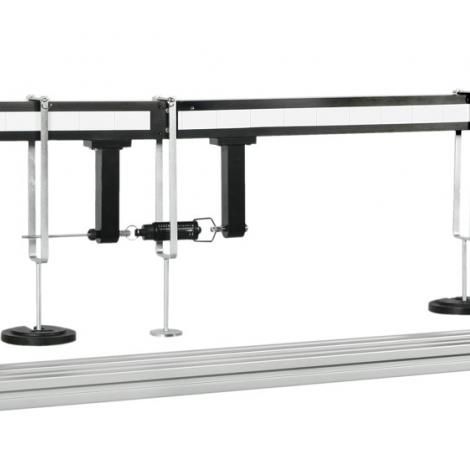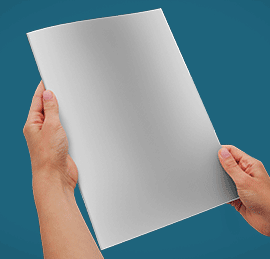A length of material supported horizontally and carrying vertical loads is called a beam. The loading causes bending and transverse shearing. The loads and reactions are the 'external' forces acting on the beam. They must be in equilibrium. However, the strength of the beam depends on 'internal' forces or moments. This experiment demonstrates the nature of these internal forces and their dependence on the external system of forces.
The experimental beam has been ‘cut’ into two parts and joined together by a pair of low friction precision ball bearings. An underslung spring balance provides a resisting moment, and also allows the section bending moment to be measured. When load is applied to the beams the spring balance is adjusted by means of a thumb knob so that each beam is brought to a horizontal resting position. The bending moment force can then be recorded.
Load is applied to the beams by the use of calibrated test weights and three specially designed hangers which have a single point contact on the beam and can be positioned anywhere along the working length of the beam section.
The beam is simply supported on end pins.
The apparatus is quick and easy to set-up on a bench top and takes up little space. It is a visual experiment and different loadings can be applied accurately and quickly.
A hinged metal strip (HFC5A) to simulate the loading pattern of panelled girder for a more advanced experiment on influence lines is optionally available.
This unit forms part of a range of analogue experiments for statics study, aimed at the value end of the market, where the focus is on manual data recording.


